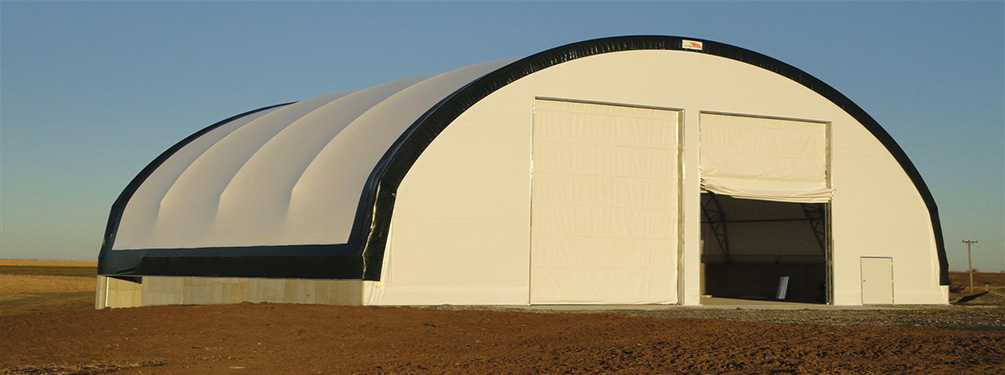Iowa Waste Systems
Challenge – Economical alternative to a landfill facility
Solution – Hercules Truss Arch Building
Size – 65′ wide x 65′ long
Application – Waste transfer station
Since 1996, Iowa Waste Systems (IWS) has specialized in providing collection, transfer, disposal and recycling services to customers in Iowa and southeast Nebraska. Their customers come from a wide range of industries, including commercial, governmental and residential. There are only three privately owned sanitary landfills in the state of Iowa, and IWS owns two of them.
The landfill facility located in Red Oak, IA was looking for a new structure to serve as their waste transfer station, but wanted a more cost-effective solution than buildings typically used for this application. Dave Kratz, a major shareholder of the company, is responsible for overseeing operations, personnel, equipment and marketing at IWS. He was chosen as the person in charge of finding the company’s new structure and began to research the alternatives. His research led him to an advertisement for ClearSpan Fabric Structures.
Kratz states, “A landfill site takes in about 10,000 tons of waste per year and the cost of building a new landfill cell every three to five years well exceeds over a million dollars. It only made economical sense to choose a fabric building for the facility because it is a long-term solution for a fraction of the typical cost.” He decided that a Hercules Truss Arch Building was the most practical choice for his company’s needs.
Besides being such a cost-effective option, the company enjoys many other advantages over a typical transfer station building. Kratz explains, “The simple design of the building allowed for a more efficient and economical construction than that of other structures, and has made the company much less costly to operate.”
He continues, “Our cost of daily operation has dropped significantly since owning our fabric structure. We no longer have to cover the waste daily with dirt, we use less fuel, and we have been able to do business with two less pieces of equipment and operate with one less employee.”
The fabric building makes their clients happier, too. “Our customers like being on concrete in an enclosed facility instead of being outside and dealing with the elements like mud, snow and wind. This makes the structure excellent for public relations,” says Kratz. He continues, “Even our neighbors have benefitted from the building. We have eliminated windblown litter because the waste is kept covered inside.”
Kratz and IWS are thrilled with their choice of a ClearSpan fabric building. He concludes, “Our fabric structure is working out great and costs half of what a traditional transfer station would. I hope that this opens the door for more waste management facilities who still rely on the typical low-volume, high-cost landfills, to consider switching to fabric buildings.”
For more information about how ClearSpan Fabric Structures helped IWS, contact Dave Kratz at dkratz09@gmail.com.



